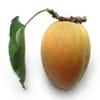Health Benefits
Arthritis treatment, Cancer prevention, Eczema treatment, Increases metabolic rate, Kidney stone treatment, Prevents constipation, Removes toxic metals, Treatment of alzheimer's disease
Cancer prevention, Heart care, Increase in haemoglobin, Regulates Blood Sugar, Ulcer prevention
General Benefits
Anti oxidant properties, Anti-inflammatory properties, Controls blood pressure, Digestive aid, Strengthens bones, Treatment of sore eyes
Boosts immune system, Digestive aid, Fights against infections, Strengthens bones
Skin Benefits
Heals sunburn, Hydrates skin, Skin rejuvenation, Skin revitalization, Treatment of dark spots, Treatment of skin diseases
Brightens and lightens complexion, Skin cleansing, Skin rejuvenation, Treatment of acne, Treatment of dark spots
Hair Benefits
Promotes longer and healthier hair, Protects hair, Regulates hair growth, Shiny hair
Promotes longer and healthier hair, Protects hair
Allergy Symptoms
Breathing difficulty, Decrease in blood pressure, Diarrhea, Itching, Red rash, Runny nose, Sneezing, Vomiting, Watery eyes
Abdominal pains, NA
Side Effects
Stressed heart, Irritation, Swelling, Swelling around mouth, Throat swelling, Tongue swelling, Strained blood vessels
Decrease in blood sugar levels, Allergic reaction, Throat irritation, Throat swelling, Possibly unsafe during pregnancy
Lactating Women
Not Available
Yes
Best Time to Eat
Along with meal, As a snack in the late afternoon, Eat the fresh ones, avoid mixing with any other foods, don't eat after meal., Strictly avoid empty stomach
As a snack in the late afternoon, Don't consume at night and before bed, Eat the fresh ones, avoid mixing with any other foods, don't eat after meal., Morning time (before lunch), Strictly avoid empty stomach
Vitamin B5 (Pantothenic Acid)
Not Available
Vitamin B9 (Folic acid)
Not Available
Vitamin C (Ascorbic Acid)
Vitamin E (Tocopherole)
Not Available
Vitamin K (Phyllochinone)
Not Available
Lutein+Zeaxanthin
Not Available
Calories in Fresh Fruit with Peel
Calories in Fresh Fruit without Peel
Not Available
Calories in Frozen Form
Not Available
Not Available
Calories in Dried Form
Not Available
Not Available
Calories in Canned Form
Not Available
Not Available
Calories in Juice
Not Available
Calories in Jam
Not Available
Calories in Pie
Not Available
Type
Fruit vegetable, Melon
Tree fruit, Tropical
Season
Spring, Summer
Monsoon, Summer
Varieties
Armenian, English, Garden, Kirby, Lemon and Persian
Ram Jarnun and Paras
Color
Dark green, Green
Black, Magenta, Purple
Inside Color
White
Purple
Taste
Juicy, Watery
Astringent, Sweet
Origin
India
Bangladesh, India, Indonesia, Malaysia, Nepal, Pakistan, Philippines, Sri Lanka
Soil Type
Loam
Loam, Sandy loam, Well-drained
Climatic Conditions
Warm
Humid, Rainfall
Facts about
- Outer waxy coating of cucumber can erase the pen writing.
- Pressing cucumber on roof of mouth for 30 sec will eliminate bad breath.
- It is made up of 96% water.
- English cucumber can grow longer than 2 feet.
- Wood of jambul tree is water-resistant wood & is used in railroads and to implement engines in the well.
- In Indian mythology, it is said that Jambul fruit was revered by Buddha.
- Jambul has a huge importance in Ayurveda.
Other Countries
Egypt, Indonesia, Iran, Japan, Russia, Spain, Turkey, Ukraine, United States of America
Bangladesh, Indonesia, Malaysia, Nepal, Pakistan, Philippines, Sri Lanka
Top Importer
France
Not Available
Botanical Name
Cucumis sativus
Syzygium cumini
Synonym
Not Available
Eugenia cumini
Subkingdom
Tracheobionta
Tracheobionta
Division
Magnoliophyta
Magnoliophyta
Class
Magnoliopsida
Magnoliopsida
Subclass
Dillenhidae
Rosidae
Order
Cucurbitales
Myrtales
Family
Cucurbitaceae
Myrtaceae
Species
C. sativus
S. cumini
Generic Group
Not Available
Not Available
Difference Between Cucumber and Jambul
We might think that Cucumber and Jambul are similar with respect to nutritional value and health benefits. But the nutrient content of both fruits is different. Cucumber and Jambul Facts such as their taste, shape, color, and size are also distinct. The difference between Cucumber and Jambul is explained here.
The amount of calories in 100 gm of fresh Cucumber and Jambul with peel is 15.00 kcal and 60.00 kcal and the amount of calories without peel is 12.00 kcal and Not Available respectively. Thus, Cucumber and Jambul belong to Low Calorie Fruits and Low Calorie Fruits category.These fruits might or might not differ with respect to their scientific classification. The order of Cucumber and Jambul is Cucurbitales and Myrtales respectively. Cucumber belongs to Cucurbitaceae family and Jambul belongs to Myrtaceae family. Cucumber belongs to Cucumis genus of C. sativus species and Jambul belongs to Syzygium genus of S. cumini species. Beings plants, both fruits belong to Plantae Kingdom.









